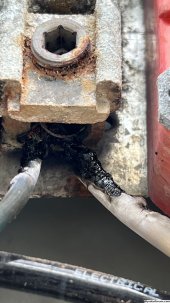ksmithaz1
Solar / EV Junkie
I can work from home sometimes several days a week. Really, really early in the game shortly after I started running(this past June), I had something similar happen. When the unit turned on, as the sun was rising and the batteries charged up past 10% (from 5) my transfer switch cut over, and 1/2 the lighting in the house was flickering, the other half was steady and bright. At the time, I went out and simply shut everything completely off, all the breakers, batteries, loads, pv, everything, then brought it back online, batteries, pv, transfer switch and it was fine. I note I was *not* tied to the grid at all at the time. This made me nervous to leave home before the switchover. Weeks later after one of the early firmware upgrades, I had something similar happen again, but this time it only lasted for maybe 5-10 seconds, then the units seemed to reset on their own and everything was fine (I went out with a meter and o-scope and checked everything).
Again, I am NOT tied to the grid, nor have I seen this since. I've done several firmware updates on the inverters, and things have been increasingly stable. I did have a few other weird issues solved by updating the BMC firmware on the batteries. There are multiple parameters for grid tie. I know that the unit is listening and will react to changes of frequency and voltage from the grid. I'm sure the EG4 engineers have some ideas, but I'd double check the firmware on your batteries for sanity reasons. I'd guess something from the grid triggered a firmware bug. If something from the grid is triggering the response it may be a little harder to diagnose and correct.
Good luck ,the EG4 folks here will get you squared away if you keep them informed.
Again, I am NOT tied to the grid, nor have I seen this since. I've done several firmware updates on the inverters, and things have been increasingly stable. I did have a few other weird issues solved by updating the BMC firmware on the batteries. There are multiple parameters for grid tie. I know that the unit is listening and will react to changes of frequency and voltage from the grid. I'm sure the EG4 engineers have some ideas, but I'd double check the firmware on your batteries for sanity reasons. I'd guess something from the grid triggered a firmware bug. If something from the grid is triggering the response it may be a little harder to diagnose and correct.
Good luck ,the EG4 folks here will get you squared away if you keep them informed.




